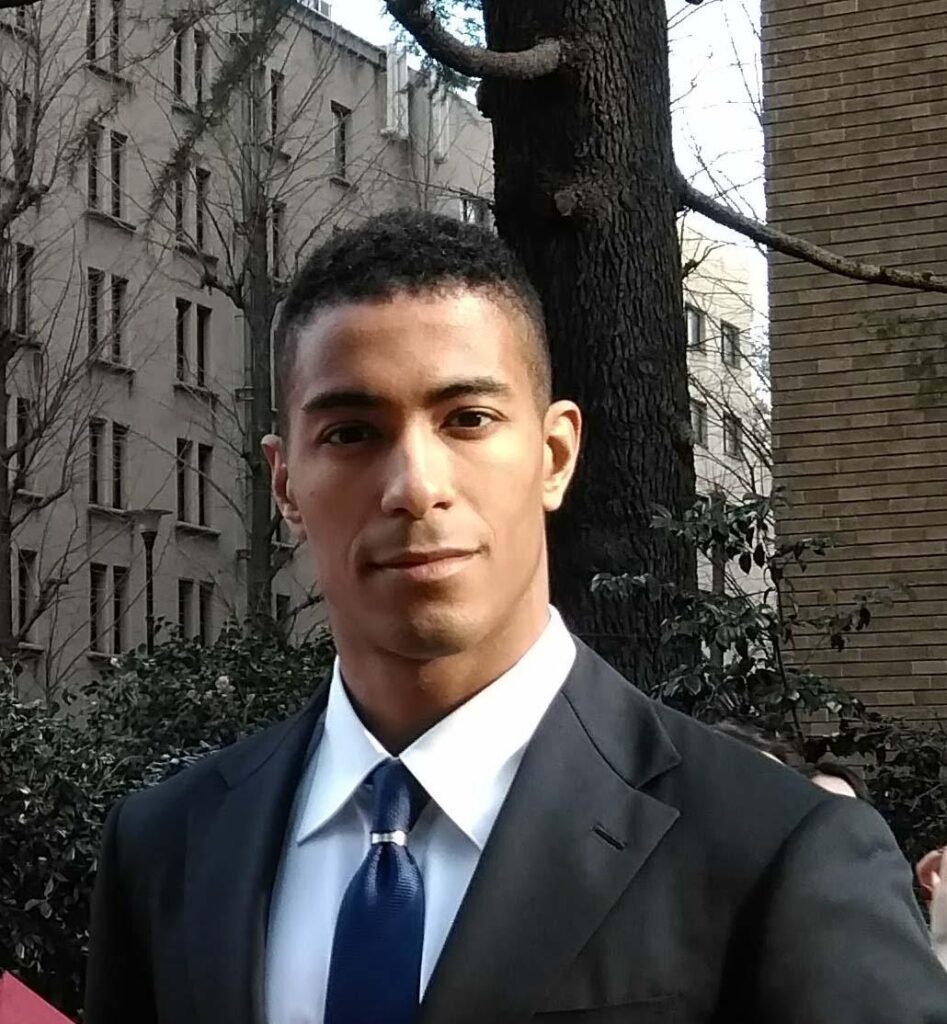
Chris’ Case

Chris’ Case
Chris’ Case: The Basics

In the middle of the night in July 2018, a woman in Ichikawa City, Chiba Prefecture, Japan, was attacked while walking home. Her attacker forced her to perform oral sex on him.
After the attacker fled, the woman spat out the semen in her mouth, went home, gargled and rinsed her mouth, then reported the crime to the police. The police took a DNA sample from the victim’s mouth but were only able to obtain a trace sample that was further contaminated by being mixed with cells from her mouth. This trace and mixed sample made DNA analysis difficult; from the outset, the police were unable to determine the DNA type of the sperm.
Despite that, in November 2021, 3 years and 4 months after the attack, Christopher Stephan Payne was arrested and indicted on the grounds that his DNA profile was “consistent” with the attacker’s.
Chris is an athlete who is fluent in Japanese (he has passed N1 of the Nihongo Kentei) . On the night of the attack in July 2018, not only was he working as a fighter at the Tokyo Fight Club in Shibuya, Tokyo (a restaurant with aring where customers can watch live martial arts); just five minutes after the attack he texted his Japanese girlfriend “Miss you so much”. This alibi was only discovered after he was formally charged.
Chris’ case is one in which an innocent man is charged based on an unreliable DNA analysis.
Why Was Chris Charged?
The trace and mixed DNA sample collected from the victim was submitted for analysis to the Chiba Prefectural Police’s Forensic Science Laboratory, but they were unable to isolate the DNA from the attacker’s sperm and could not identify his DNA profile.
Meanwhile, in February 2020, 1 year and 7 months after the attack, Chris was arrested in Yamanashi Prefecture for breaking and entering after becoming drunk and falling asleep in the entryway of a stranger’s house. He was released the following day, but not before the police asked him to submit to a voluntary DNA swab. Chris consented.
From watching American crime shows like CSI, Chris knows that DNA is conclusive evidence in sex crimes, so if Chris were the attacker, there’s no reason he would have voluntarily given the police his DNA sample.
The result of this swab was that Chris’ DNA profile was found to be “consistent” with that of the attacker.
There is a crucial difference between “consistent” and “matching” DNA. Analysis identifies the genetic types of multiple loci on theDNA. A “match” means that the genetic types of different samples are the same at ALL loci, while “consistent” means that the DNA profile match at some of the loci that were identified, but since other loci cannot be identified, there is a possibility that there is no match at these unidentified loci. The only reason Chris was charged is because the his DNA types and the attacker were found to be “consistent”.
The Second DNA Analysis
After he was charged, Chris asked his two court-appointed attorneys for a second, more accurate DNA analysis. Based on this request, the Chiba District Court ordered a second analysis to be performed by “Professor Y” of “K University”.
Professor Y’s analysis (hereinafter “Y Analysis”) was also a test of the mixed sample. It did not identify the DNA from the attacker’s sperm, and it similarly found that Chris’ DNA was “consistent” with the perpetrator’s. Nevertheless, the Y Analysis reported the miraculous (dangerous) estimate that the probability that another person would have the same DNA type (i.e.,“occurrence frequency”) is approximately one in 17 trillion (2,099 times the global population!).
In light of this outcome, Chris’ attorneys feared there was no hope for an acquittal, so they persuaded Chris to prepare for a lay judge trial scheduled to begin on 16 January 2023 while presuming a guilty verdict.
Innocence Project Japan (IPJ)’s Assistance
However, one of Chris’ supporters (the father of his then-girlfriend) reached out to IPJ for help. Our volunteer attorneys reviewed the DNA analysis and realized that its probability calculation was working off the assumption that the perpetrator’s and Chris’s DNA types were a complete match, even though the perpetrator’s full DNA profile couldn’t be determined. On 10 January 2023 (six days before the trial), the attorneys from IPJ met with Chris and explained that the Y Analysis is not conclusive evidence. Chris immediately asked them to represent him.
Once private counsel is appointed, court-appointed attorneys must be removed from the case. Therefore, the Chiba District Court dismissed the two court-appointed attorneys and cancelled the trial.
After redoing the pre-trial proceedings, a new trial was scheduled to begin in June 2024.
Miscarriage of Justice: Proof of Innocence Ignored
The defense argued that “the Y Analysis is not conclusive evidence of guilt because it calculated an occurrence frequency despite failing to identify the perpetrator’s DNA profile. Chris was working in Shibuya, Tokyo at the time of the attack and there is a shift schedule that proves this. When considered together with the message he sent to his then-girlfriend 5 minutes after the attack occurred, these are conclusive evidence of his innocence.”
However, on 9 July 2024, the Chiba District Court convicted Chris and sentenced him to 8 years in prison with labor, concluding that theY Analysis was credible and the text message was not inconsistent with Chris being the culprit. This first trial is a clear miscarriage of justice, where the judges were dazzled by the second DNA analysis and failed to correctly evaluate the proof of Chris’ innocence. Chris immediately appealed to the Tokyo High Court. Two important issues have since emerged:
①The defense was informed by US-based DNA expert Dr. Simon Ford that the DNA electropherogram (the chart produced by DNA identification software to show DNA testing results) can be manually edited, therefore they should obtain the raw data from the Y Analysis.Once they received that raw data, the defense discovered that the Y Analysis report had ADDED results that matched Chris’ DNA to at least four loci in the perpetrator’s DNA profile which the analyzer did not conclude as a “match”; and DELETED at least one data in the attacker’s DNA profile. If the DNA type differs in even one locus, Chris cannot be the culprit. Y Analysis is a forged result based on falsified data.
② The defense realized the importance of the phone location data and, in May 2025, obtained Chris’ Google account login credentials that they then gave to the prosecutors, asking them to investigate Chris’ location at the time of the attack. In the United States, cellphone location data is widely considered to be scientific and conclusive evidence of innocence along with DNA analysis. In this case, the police and prosecutors seized Chris’ phone when they arrested him but they did not look into it.

Support Chris!
Chris was wrongly convicted of a crime he did not commit based on a DNA test that ignored evidence of his innocence.
The fact that the courts have detained him for over 3 and a half years without listening to his claims of innocence can only be described as “hostage justice”.
The data from the second DNA analysis was fabricated; Chris’ innocence is clearly proven by the analysis. Moreover, if the police had investigated the location data of Chris’ phone when they first arrested him, Chris would never have been charged.
This case shows us that there are serious ands hameful problems lurking in the Japanese criminal justice system.
Please help get more eyes on Chris’ case and lend your support!!

